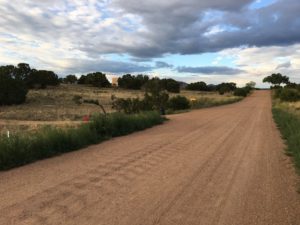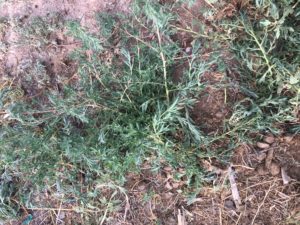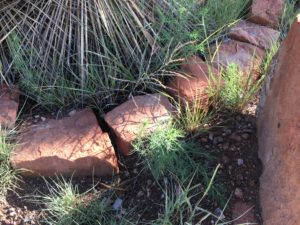
Tumblin’ Tumbleweeds-a Tutorial
Yesterday, it dawned on me that the lush green plants edging the roadside and thriving around my mailbox are tumbleweeds. I should have known anything thriving that robustly in my garden had to be an invasive weed. I’d been eyeballing this prolific stand with suspicion, waiting for it to do something, and when I figured out it was tumbleweed, I was thankful it hadn’t obliged.

I went online for plant identification, and two websites agreed, tumbleweed. On several other sites though, the photos of Russian thistle looked different. Last night at the Eldorado Community Garden I spotted the culprit growing around the compost pile. I asked a master gardener and she agreed, tumbleweed. Another expert disagreed. Not tumbleweed, not Russian thistle.

After the glorious and copious rain we received last night, I decided to tackle weeding for a few hours this morning. Whatever the heck it is, it’s a weed and I don’t want it! The universe provided clarification by sending a neighbor down the road to answer my question. She was driving by and stopped to introduce herself and offer encouragement. Turns out, she worked for the Department of Forestry for 25 years in land management and identified the weed as kochia scoparia, or bassia scoparia, not Russian thistle. Again, I consulted the internet and found a comprehensive website from Australia had the most information on the weed.

“Features to aid identification of kochia include: hairy flowers located at the top of the stem where the leaf meets the stem; star-shaped fruit and leaves with, in most cases, three parallel veins along their length; and the tendency for the plants to break off at the base and roll as tumbleweeds when they die off during autumn.”
Pictures on the website confirm the ID. Both Russian thistle and kochia scoparia break off at the base and form tumbleweeds.



0